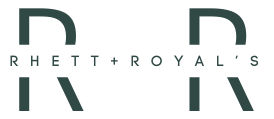Healthy Pet Food Options: Nourishing Your Furry Friends for a Vibrant Life
As devoted pet parents, we all want to ensure our four-legged companions enjoy a life filled with vitality and happiness. One of the most influential factors in achieving this goal is the food we serve them. With a growing variety of healthy pet food options available today, it’s easier than ever to provide meals that are both nutritious and delicious. In this article, we’ll explore what constitutes healthy pet food, the benefits of making the switch, and practical tips for choosing the best options for your dog or cat.
Why Choose Healthy Pet Food?
The saying “you are what you eat” holds true for our pets, too. Feeding your pet a diet rich in high-quality, natural ingredients not only supports their immune system and energy levels but also contributes to overall longevity. A wholesome diet can help manage weight, maintain a shiny coat, support dental health, and even reduce the risk of chronic conditions. More importantly, healthy pet food options often emphasize sustainability and ethical sourcing, resonating with pet owners who are mindful of both their pet’s well-being and the planet.
Understanding Your Pet’s Nutritional Needs
Different pets have different dietary requirements. For instance, dogs are omnivores and can benefit from a balanced mix of proteins, fats, and carbohydrates, whereas cats are obligate carnivores and require a diet high in animal-based proteins. When choosing pet food, consider the following factors:
- Life Stage: Puppies and kittens have different nutritional needs compared to adult or senior pets.
- Activity Level: More active pets might require additional calories and protein.
- Health Conditions: Pets with allergies or sensitivities may benefit from limited-ingredient diets or hypoallergenic options.
Consulting with a veterinarian or a pet nutrition specialist can provide personalized guidance to ensure your pet receives the ideal balance of nutrients.
Key Ingredients to Look For
Healthy pet food should be packed with natural ingredients that promote good health. Here are some components to consider:
- High-Quality Proteins: Look for sources like free-range chicken, grass-fed beef, or wild-caught fish. Proteins are essential for muscle repair, immune function, and overall growth.
- Whole Grains and Vegetables: These provide essential fiber, vitamins, and minerals. Opt for pet food that includes a variety of vegetables like sweet potatoes, peas, or carrots.
- Omega Fatty Acids: Ingredients rich in omega-3 and omega-6 fatty acids, such as fish oil or flaxseed, can support skin and coat health.
- Avoid Artificial Additives: Prioritize foods free from artificial colors, flavors, and preservatives, as these can sometimes contribute to health issues over time.
Exploring Different Healthy Pet Food Options
-
Holistic and Natural Diets:
Many pet owners are turning to holistic pet food options that prioritize natural ingredients and sustainable practices. These diets are designed not just to feed, but to nourish, with an emphasis on whole, unprocessed ingredients. -
Raw and Homemade Diets:
Some pet parents choose to prepare raw or home-cooked meals, believing that these diets closely mimic what their pets would eat in the wild. If you go this route, it’s crucial to work closely with a veterinary nutritionist to ensure all nutritional bases are covered. -
Grain-Free Formulas:
Grain-free pet foods are popular among owners whose pets have sensitivities or allergies to common grains like wheat or corn. However, it’s important to note that grain-free isn’t inherently healthier—it’s all about finding the right balance for your pet’s unique needs. -
Specialized Therapeutic Diets:
For pets with specific health issues, therapeutic diets prescribed by veterinarians can offer targeted benefits. These formulas are typically formulated to manage conditions like kidney disease, diabetes, or gastrointestinal problems.
Transitioning to a Healthier Diet
Switching your pet to a healthier food option should be done gradually to avoid digestive upset. Start by mixing a small portion of the new food with your pet’s current diet and slowly increase the proportion over the course of several days or weeks. Monitor your pet closely for any changes in digestion, energy levels, or overall behavior, and don’t hesitate to consult with a professional if you notice any concerns.
Final Thoughts
Investing in healthy pet food is one of the most impactful ways you can enhance your pet’s quality of life. Whether you choose holistic diets, raw meals, or specialized therapeutic options, the key is to provide a balanced, nutrient-rich diet that caters to your pet’s individual needs. By prioritizing quality ingredients and thoughtful preparation, you’re not only fueling your pet’s body but also nurturing their overall well-being for a happier, healthier future.
Embrace the journey of discovery as you explore the best healthy pet food options available and witness the positive transformation in your beloved companion’s vitality and joy.

